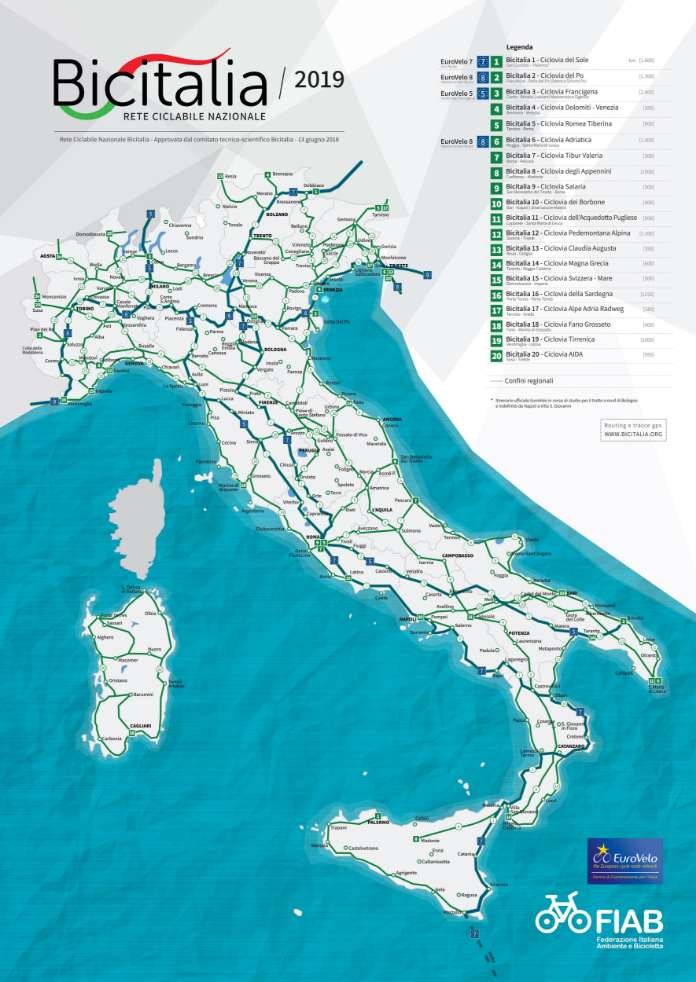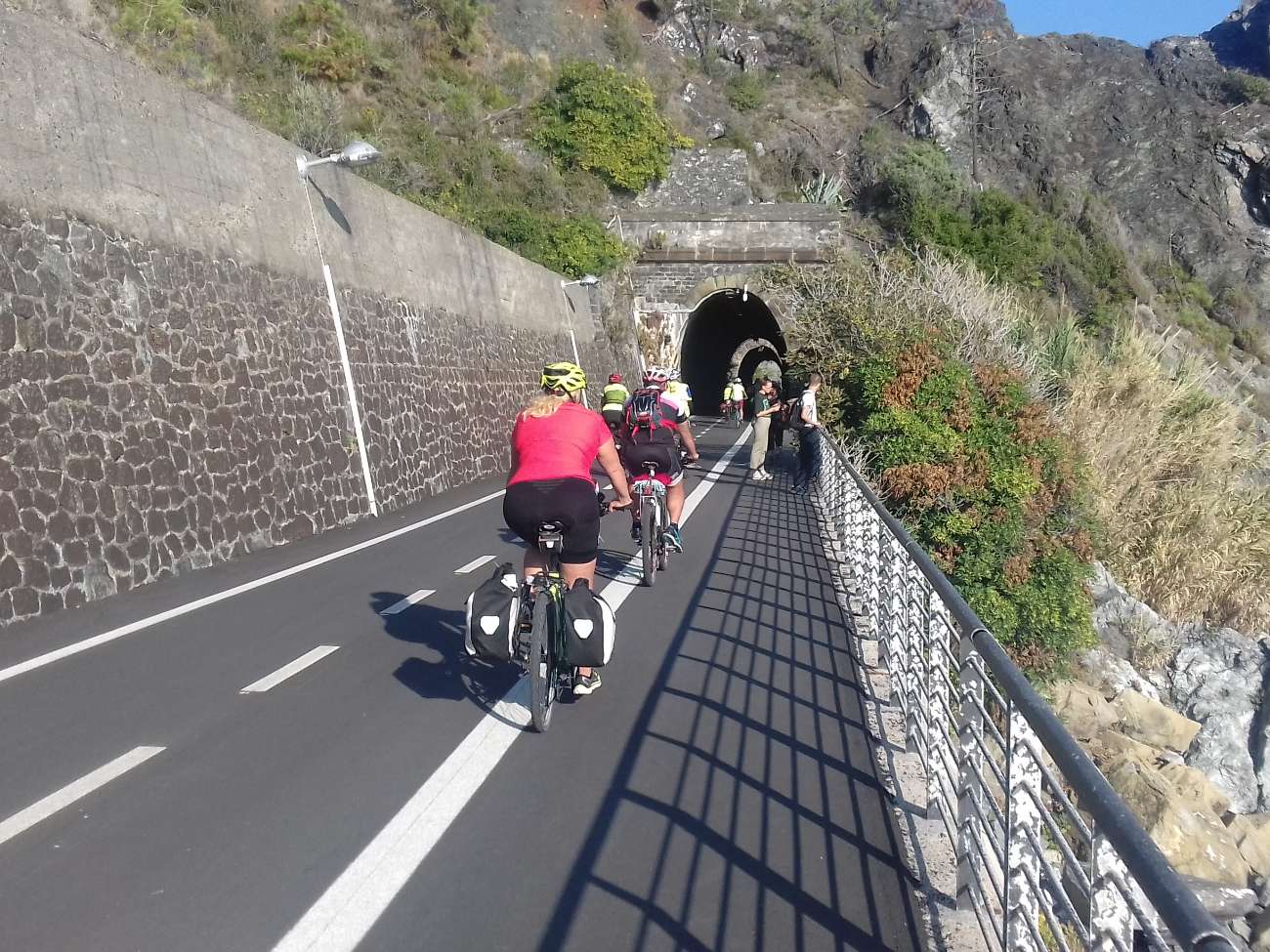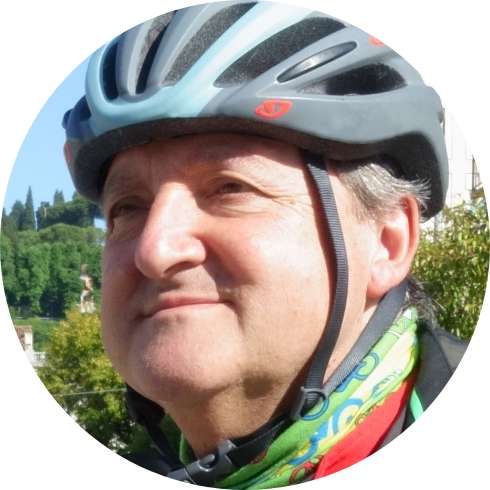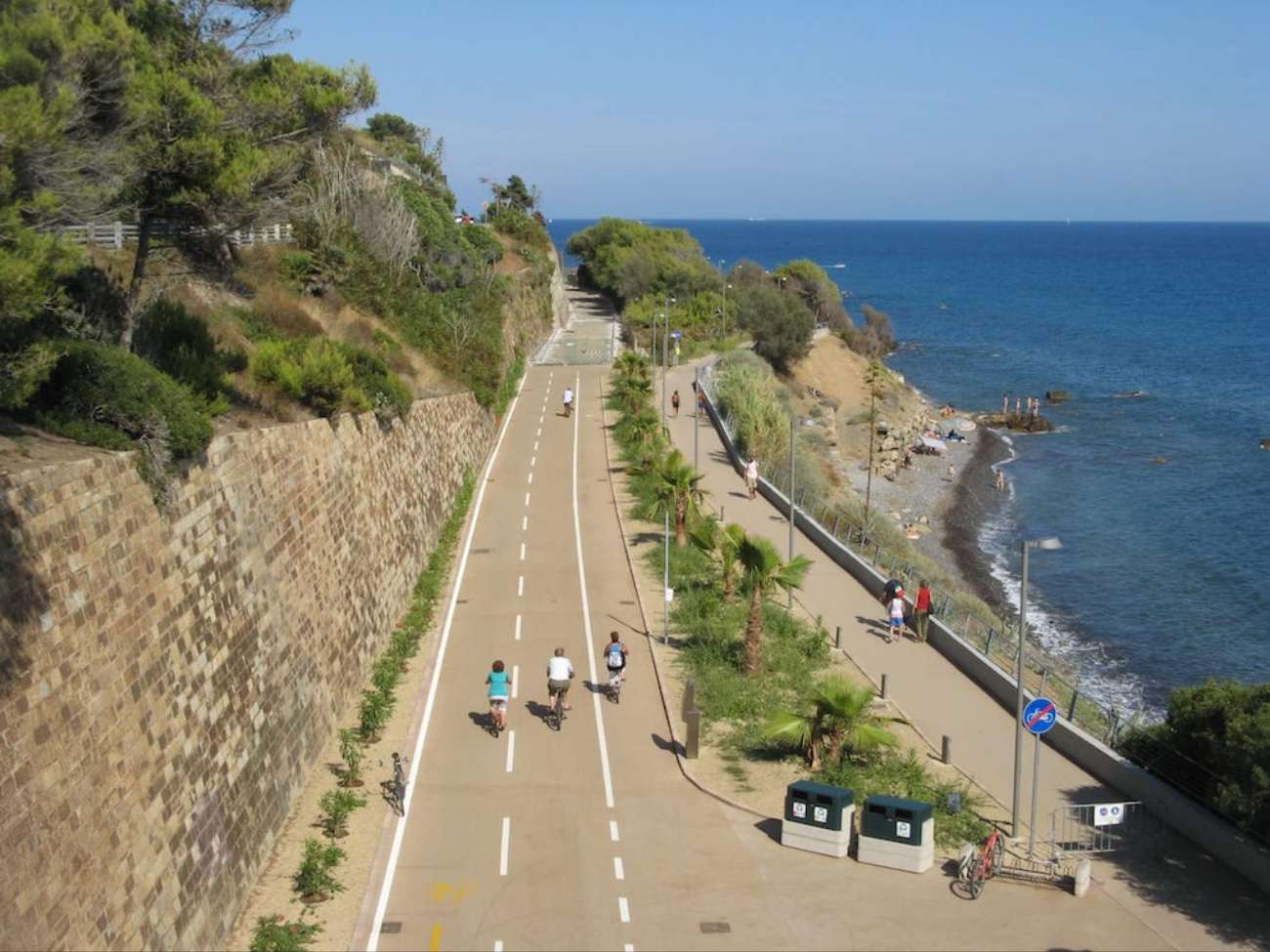Live virtual tours abroad, with a local guide? Now it is a reality. A link to immersive experiences for discovering the world, from home or at school.
In our country there are over 23,000km of cycle paths, including long-distance routes, greenways, high-quality cycle tracks and roads with low traffic, mapped by FIAB - the Italian Environment and Bicycle Federation. Infrastructure that encourages the development of cycle mobility, both in an urban environment and for tourism.

“Cycling is not going biking, because the bicycle is as much a mode of transport in the urban context as it is a free time activity, and as such, it is involved in all the issues of sustainability, climate change, environmental protection, traffic congestion and safety. A quarter of pollution is caused by transport, and the bicycle is one of the most effective tools to reduce energy dependence and provide a tangible response to the planet's problems.”
These are the words of Antonio Dalla Venezia, spokesperson for the Italian Environment and Bicycle Federation - FIAB, for the Bicitalia project (www.bicitalia.org), the National Cycle Path Network that has been entirely mapped - starting in June 2000 - by FIAB volunteers and experts, including 20 large national routes, which are connected to many different regional routes, including greenways, high-quality cycle tracks, and cycle paths on disused railways and along waterways.
They range, therefore, from long-distance routes suitable for cycle trips lasting even several days, to shorter cycle tracks that, with one or two stops, provide unforgettable weekends at a leisurely pace.

There are over 23,000km of cycle paths and bike routes in our country, downloadable for free as GPX tracks from the site Bicitalia.org, which is offered as a useful tool for all Italian and international cycle-tourists - constantly on the increase - looking for inspiration for their next area to explore by bike. It allows them to cycle through natural places to discover, in every part of Italy, the rich cultural, artistic, and food and wine heritage in charming towns and authentic villages that are still unexplored.
Once the itinerary of interest is identified, from the pages on the site Bicitalia.org it is also possible to easily search for bike-friendly accommodation facilities on the route that belong to the Albergabici.it network, the portal created by FIAB in 2003 that includes over 600 hospitality establishments - hotels, agritourisms, bed and breakfasts, campsites, refuges, etc. - equipped to guarantee the services that are indispensable for those travelling on two wheels: a safe place to store bikes during the night, equipment for basic maintenance, the possibility to wash clothes and equipment, a hearty, energising breakfast, information on cycle routes, the itineraries in the area, and much more.

The main feature of the Bicitalia network is the fact that we wanted and knew how to promote and create a network from what already existed on the territory, such as greenways, cycle paths, cycle-tourism routes and streets with low traffic. Over the years, these elements have been the foundation for projects and investments - public and private - that have led to the creation of this (constantly growing) web of cycle paths and tracks, which are indispensable for encouraging the development of slow, sustainable tourism.
There are many virtuous examples that deserve to be promoted, such as the cycle track through the Coastal Park in Liguria, from Ospedaletti to San Lorenzo al Mare, via Sanremo, created on the route of a former railway: its 24km are considered to be one of the most beautiful cycle tracks in Italy, visited by as many locals as tourists, and in a short space of time it has helped to adjust the seasonal tourist flows, attracting visitors to the area at all times of year.

“In light of the results created, the initial skepticism we saw when the project for the Coastal Park cycle track started to take its first steps then quickly transformed into the desire to recover the entire route as far as Andora
”
The work to extend the route has already given us a further 3km over the summer months, and the Coastal Park track will soon reach 32km, fully inserted into what is known as the Tyrrhenian Cycle Trail, one of the great Bicitalia arteries that connects Ventimiglia to Rome, crossing Liguria, Tuscany and Lazio, for over 900km.
Instead, running along the other side of Italy for 1,804km - already mapped by FIAB volunteers - is the Adriatic Cycle Trail, from Trieste to Santa Maria di Leuca (LE), following the riviera with the most beaches, or in other words, a coastline that passes through 7 regions: Friuli-Venezia Giulia, Veneto, Emilia-Romagna, Marche, Abruzzo, Molise and Apulia.

The ministerial planning and funding started up in 2016, but the Adriatic Cycle Trail also benefits from the activism of local institutions, which in previous years had already invested, in their respective areas, in cycling infrastructure that is designed not only to attract tourists, but also to support the development of a sustainable everyday transport option for residents.
“The Adriatic Cycle Trail project, which is now the most clicked on the Bicitalia website, has activated new mechanisms in the field of cycle planning with a view to the urban regeneration of individual towns and cities, with virtuous examples in particular in Emilia-Romagna, Marche and Abruzzo, where connecting bridges, coastal cycle paths along the seafront (such as the Parco del Mare in Rimini), and recovered routes (such as the beautiful Trabocchi Cycle Path in Abruzzo on the disused railway along the coast) have been built
”
explains Antonio Dalla Venezia.
And also:
“It is important to emphasise that, in recent years, the government has taken the Bicitalia project developed by FIAB as the basis for the creation of a new national cycle network, which includes the 10 routes of the National System of Tourist Cycle Trails planned and financed by the Ministries of the Environment and Infrastructure and Transport, to encourage the development of slow, sustainable tourism.
”

Indeed, the National Recovery and Resilience Plan (PNRR) has allocated investments of 600 million euros to finance the creation of tourist cycle routes (400 million) and urban cycle paths (200 million), over a total of 1,800 kilometres. The Ministry of Infrastructure and Sustainable Mobility (MIMS) is defining a General Plan for Cycle Mobility that will be issued in Italy for the first time, containing the guidelines through which the MIMS intends to promote mobility on two wheels, and also allowing interventions to be planned based on an integrated vision, shared with local communities.
We are not only speaking about cycle paths, but also all the interconnections possible with railway stations, ports and airports, and the development of sharing and the concept of Mobility as a Service - MaaS: the new way to get around, which replaces the established idea of personal vehicle ownership with the concept of shared mobility, understood as a service that can be used as needed.
“A cultural change is taking place in our country," explains Minister Enrico Giovannini, "which is leading to more and more widespread use of bicycles, both for urban mobility and for tourism. This cultural change, accelerated by the pandemic, comes with interventions and investments designed to create the infrastructure necessary to develop this form of mobility.
”

Images Credits:
© FIAB Bicitalia
Live virtual tours abroad, with a local guide? Now it is a reality. A link to immersive experiences for discovering the world, from home or at school.
The importance of a culture of social and environmental responsibility... following our hearts above all. The words of the Condé Nast Global Sustainability Ambassador.
